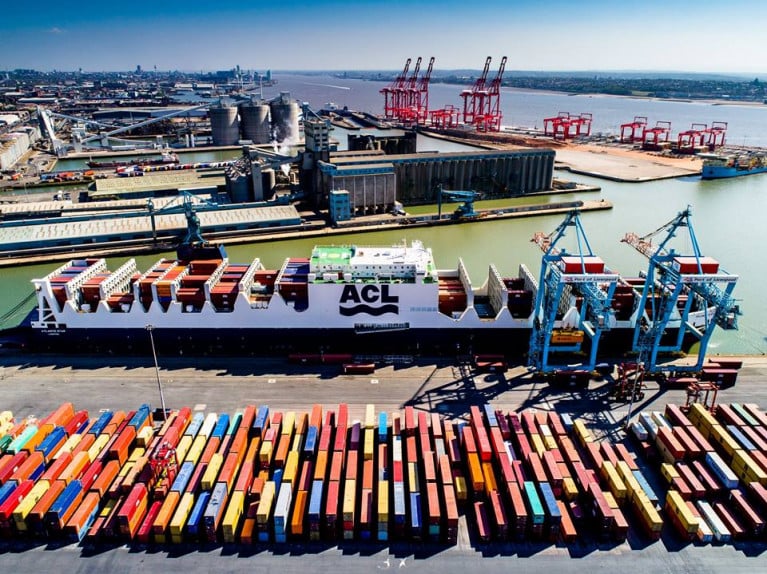Displaying items by tag: Atlantic Container Line
Peel Ports Group Invests in New Ship to Shore Container Gantry Cranes for Port of Liverpool
Peel Ports Group in the UK has invested in two new ship-to-shore (STS) container cranes for the Port of Liverpool (Terminal 1), which were built by Liebherr Container Cranes Limited and likewise for the Port of Cork's new pair of STS cranes as Afloat reported today.
The investment at the Merseyside port of new infrastructure is to further support growth from Intra European Feeder networks (including Afloat's adds BG Freight Line) and specialist carrier Atlantic Container Line (ACL).
A significant investment for the company, the new container gantry cranes will increase the number of (STS) cranes at the terminal and overall berth productivity still further whilst increasing height and reach capabilities of the terminal.
The new design utilises high tensile steel and a lattice boom and beam construction, designed and built by Liehberr, resulting in a lighter crane with reduced wheel loads, a key consideration due to the narrow span and quay structure at the Port of Liverpool’s Terminal 1.
David Huck, Managing Director at Peel Ports said: Our investment in the very latest 'Panamax' container cranes at Terminal 1 demonstrates our long term commitment to investing in our customers and further compliments our Irish Sea hub proposition connecting the world to Liverpool and by far the largest consuming and exporting region of the UK.
The new cranes will significantly enhance the Port of Liverpool’s capabilities for ACL, as well as other current and future users of Terminal 1. For us, innovation and improvement are at the heart of our Port-centric solutions, and we’re excited to get the new cranes in place and commissioned for the start of 2022.
ACL is the Port of Liverpool’s longest-serving container carrier and, in 2019, signed a 15-year contract extension agreement with Peel Ports for container and roll-on / roll-off (RoRo) operations. The agreement is valid until 2035 and signifies ACL’s confidence in the growing volume of transatlantic trade between the UK and North America. (See Afloat's coverage dating from 2016 featuring Atlantic Star, leadship of ACL's 4th generation (G4) con-ro ships).
Andrew Abbott, CEO at ACL said: “Liverpool has been Atlantic Container Line’s home port in the UK for 54 years. The port has seen four generations of ships make calls twice a week as technology changed and transatlantic cargo volumes grew. ACL’s current generation of Container/RoRo vessel is twice as large as its predecessor, but uses the same footprint in order to fit through the lock at Royal Seaforth.
“To carry all the extra cargo, the new ships are considerably higher, so high, state-of-the-art gantry cranes are essential in order to productively handle them. Peel Ports answered the challenge with brand-new hardware, enabling them to handle the new ACL vessels more quicky and more efficiently than ever before.
“We congratulate Peel Ports for this fantastic accomplishment. ACL looks forward with confidence to a bright future at the Port of Liverpool.”






























































